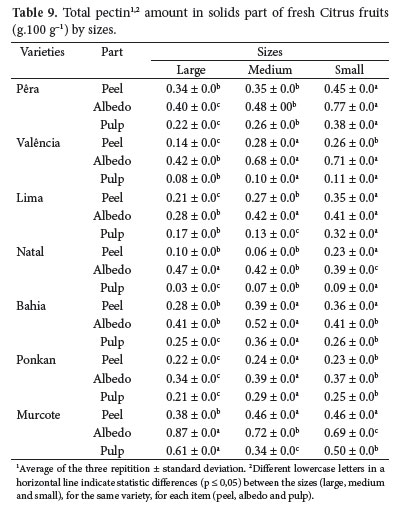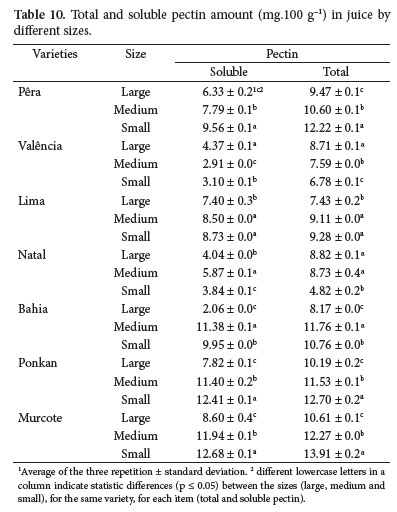Citric fruits - in natura, as frozen pulp or even as juice - are one of the most important Brazilian exportation products. They are a source of ascorbic acid - a potent antioxidant, and pectin, which is used in the food industry and is an important dietary fiber. This project aims to quantify ascorbic acid and pectin contents in citric fruits, commercial oranges and tangerines, comparing them in sizes and varieties. Ascorbic acid amount was measured in juice comparing sizes, varieties and storage conditions, using a tritimetric method with 2.6-dichlorobenzenoindophenol indicator. Total and soluble pectin in each part of the fruits (peel, albedo, pulp and juice) were quantified using the polygalacturonic acid as a standard. Differences were found between the sizes. The highest content of vitamin C was found in the oranges (Bahia variety). Comparing the storage temperatures, the biggest loss was at room temperature. Albedo presented the highest content of pectin in all fruits. In juice, the total and soluble pectin contents increased as fruits size decreased. Oranges and tangerines differed in the amount of pectin
orange; tangerine; pectin; ascorbic acid; composition; size










